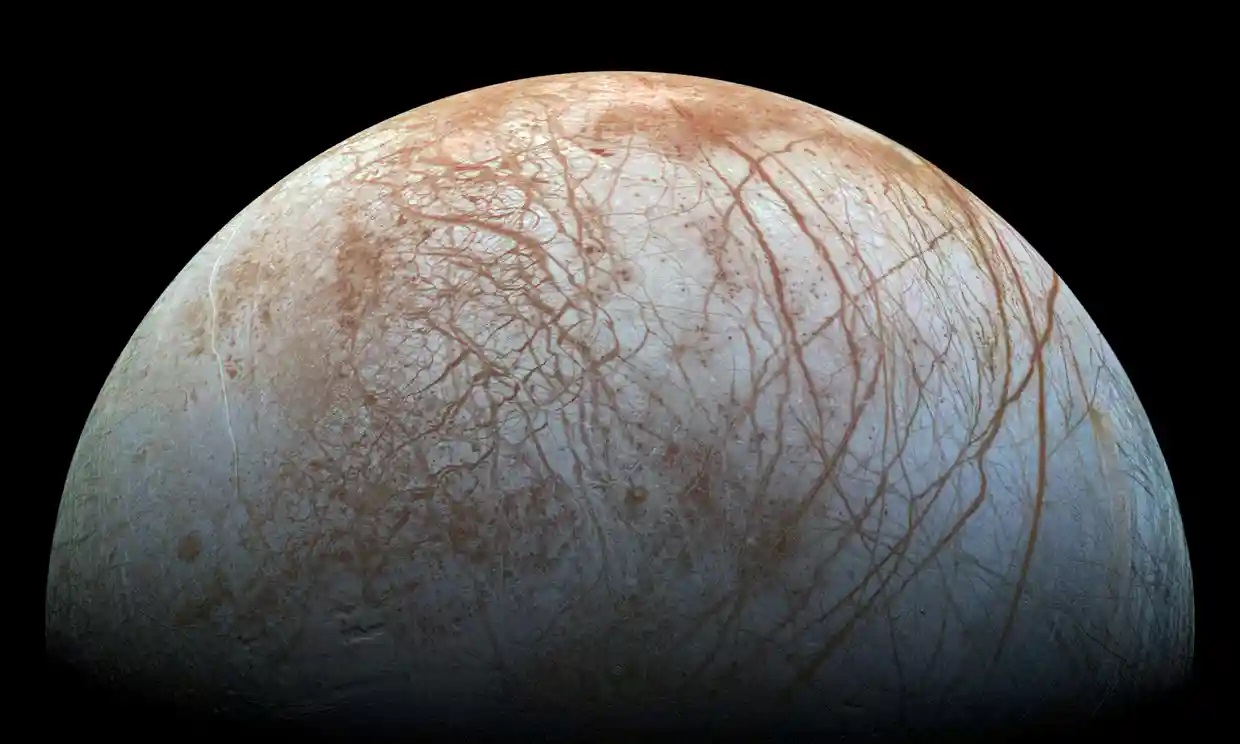
A new study exploring the icy shell of Europa, one of Jupiter’s largest moons, finds the frigid satellite shares striking similarities with Greenland.
Evidence of the shallow pools—not far beneath the frozen surface of Europa—emerged when scientists noticed that giant parallel ridges stretching for hundreds of miles on the moon were strikingly similar to surface features discovered on the Greenland ice sheet.
Researchers at Stanford University believe life could have evolved on the Jupiter moon’s shallow pockets of water near the surface.
“Liquid water near…the surface of the ice shell is a really provocative and promising place to imagine life having a shot,” said Dustin Schroeder, an associate professor of geophysics at Stanford.
“The idea that we could find a signature that would suggest a promising pocket of water like this might exist, I think, is very exciting,” he adds.
Jupiter’s Europa is slightly smaller than Earth’s moon
At 2,000 miles wide, Europa is slightly smaller than Earth’s moon. It became a leading contender in the search for life elsewhere when observations from ground-based telescopes and passing space probes found evidence of a deep ocean 10 to 15 miles beneath its icy surface.
Europa’s ocean is estimated at 40 to 100 miles deep, so even though it is one-quarter the width of Earth, it may hold twice as much water as all of Earth’s oceans combined.
Double ridges on Europa may be evidence of water
The Stanford team’s insight was sparked by an academic presentation about Europa that brought to light the curious double ridges.
Pictures of the features reminded the scientists of a much smaller double ridge that had been detected in northwest Greenland. Armed with radar and other observations of the Greenland ridges, they set about understanding their formation.
“On the Greenland ice sheet there is this little double ridge feature that looks almost exactly like the ones we see on the surface of Jupiter’s moon Europa,” said Riley Culberg, a PhD candidate and geophysicist at Stanford.
“And the reason it’s exciting to have this analog feature in Greenland,” explained Culberg, “is that we’ve been trying to figure out what makes double ridges on Europa for about 20 years.”
The researchers describe how Greenland’s double ice ridges, which are about 50 times smaller than those on Europa, formed when shallow pools of subsurface water froze and fractured the surface time and time again, steadily driving up the twin ridges.
“It’s like when you put a can of soda in the freezer and it explodes. It’s that kind of pressure that pushes up the ridges on the surface,” said Culberg.
See all the latest news from Greece and the world at Greekreporter.com. Contact our newsroom to report an update or send your story, photos and videos. Follow GR on Google News and subscribe here to our daily email!



